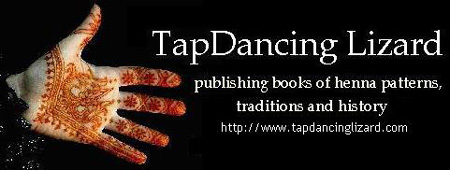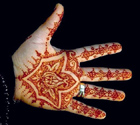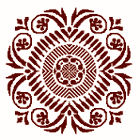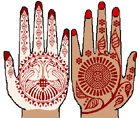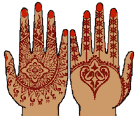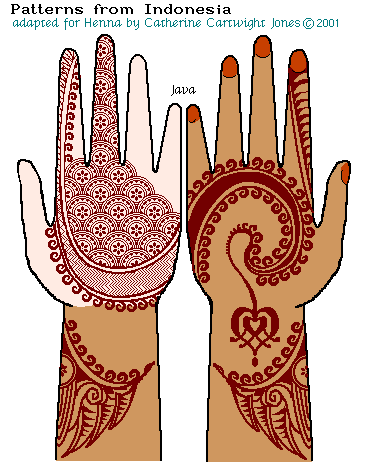|
Traditional henna body art is widespread among both dark and light skinned people. From the Atlantic coast of Africa, across the Middle East to South Asia, Malaysia, and Indonesia, people henna to celebrate holidays, marriages, and births, to bring luck and enhance beauty. Over half of the henna using countries lie between the Tropic of Cancer and the Tropic of Capricorn, thus darker skinned people ornament themselves with henna as do lighter skinned people. Africa has the largest and most diverse body of henna techniques for women of color. Henna is easily grown in the hot, dry areas of Africa. Egypt has grown henna as a commercial crop since at least 1000 BCE, selling the leaves for sun block and dye, the blossoms for perfume, and the oil for liniment. Morocco is presently an exporter of high quality henna, as well as Tunisia and Sudan. Women grow henna alongside their rose bushes in household gardens so they can have fresh henna as needed. Henna is used in every country in Africa where there is a Muslim community. Muslim women and men celebrate the "Night of the Henna" before their wedding night. Circumcisions and Eids are also celebrated with henna. African women who have given birth to a son may expect a gift of henna, and henna is a favorite present brought back from a pilgrimage to Mecca. Courtship and betrothal gifts include henna. Henna recipes and applications in Africa have been developed to accommodate skin tones from very pale Mediterranean coastal people to ebony Sub-Saharan tones, from humid to arid, drying situations, from cool Anti-Atlas Mountains to Saharan heat (See reference 1 for pattern examples). Ethnic Indian Hindu communities on the east coast of Africa maintain their henna traditions as well. In southern India and neighbouring countries, in the Arabian Ocean, Indonesia and Malaysia, people may have skin tones comparable to equatorial African people. Both Hindu and Muslim groups in South and Southeast Asia celebrate marriages and holidays with henna, whether they are dark or light skinned. Henna techniques are adapted to ornament them. |
